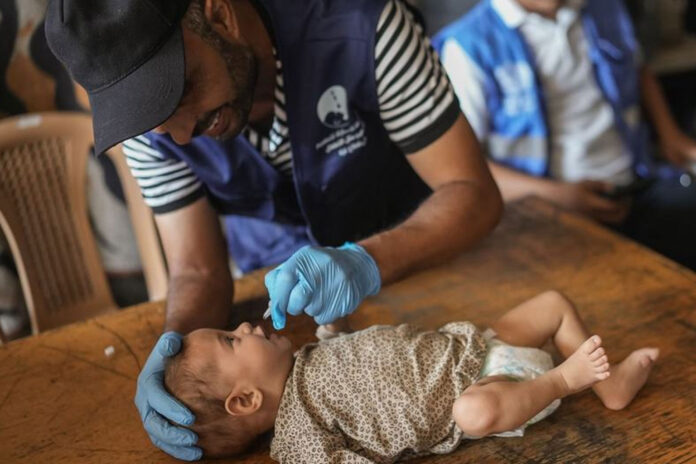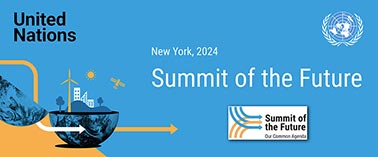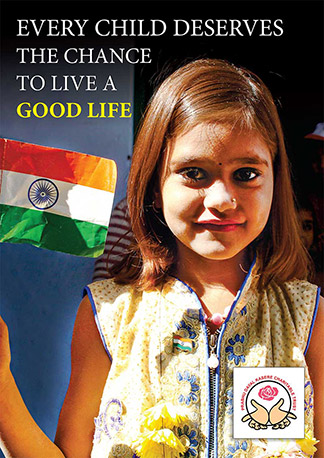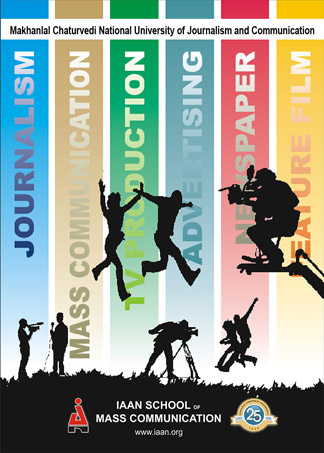The United Nations has initiated an urgent polio vaccination campaign in Gaza, marking the first time in 25 years that the virus has reemerged in the region. The resurgence of polio, a disease once thought to be eradicated from the area, is a direct consequence of the breakdown in health infrastructure amidst the ongoing Israel-Hamas conflict. The reappearance of this highly contagious virus in Gaza highlights the severe impact that war has had on the region’s public health system, leading to significant concerns about the future of disease control in conflict zones.
Health infrastructure in crisis
For over two decades, Gaza had been free from polio, thanks to rigorous vaccination efforts that had effectively kept the virus at bay. However, the prolonged conflict between Israel and Hamas has severely damaged Gaza’s health infrastructure, making it difficult to maintain routine immunisation programs and leaving children vulnerable to preventable diseases. The resurgence of polio in Gaza underscores the devastating impact of war on public health and the urgent need for international intervention to restore essential health services in the region.
The United Nations, in collaboration with local health authorities and international partners, has launched an emergency vaccination campaign focussing on children under the age of five, who are most vulnerable to the virus. The campaign aims to reach over 800,000 children across Gaza, with the goal of preventing a large-scale outbreak. “The reemergence of polio in Gaza is a stark reminder of the consequences of war on health systems,” said a spokesperson for the UN. “We are working around the clock to ensure that every child in Gaza receives the necessary vaccination to protect them from this debilitating disease.”
The challenge of vaccination in conflict zones
Conducting a vaccination campaign in a war-torn region presents significant challenges. The ongoing conflict has disrupted supply chains, making it difficult to deliver vaccines to all parts of Gaza. Moreover, the destruction of health facilities has left many areas without proper storage facilities for vaccines, which require strict temperature control to remain effective. The UN has had to employ innovative strategies to overcome these obstacles, including mobile vaccination units and the use of local volunteers to reach remote areas.
The situation in Gaza is further complicated by the displacement of large segments of the population, with many families fleeing their homes due to the ongoing violence. This displacement has made it difficult to track children who need to be vaccinated, increasing the risk that some may be missed by the campaign. The UN is working closely with local communities to identify and reach these children, but the task is made more difficult by the fluid and unstable nature of the conflict.
A global concern
The resurgence of polio in Gaza is not just a local issue; it has global implications. Polio is a highly contagious virus that can spread rapidly in unvaccinated populations, and the reemergence of the disease in Gaza raises concerns about the potential for it to spread to other regions. The World Health Organization (WHO) has already issued warnings about the risk of polio spreading to neighbouring countries, particularly those with low vaccination coverage.
In response to these concerns, the international community has pledged additional support to Gaza’s polio vaccination campaign. Several countries and global health organizations have committed resources to ensure that the campaign can reach its targets. However, experts warn that without a sustained effort to rebuild Gaza’s health infrastructure, the risk of further outbreaks remains high.
The need for long-term solutions
While the current vaccination campaign is a critical step in preventing a polio outbreak, it is clear that a more comprehensive approach is needed to address the root causes of the health crisis in Gaza. The destruction of health facilities, the disruption of medical supplies, and the displacement of the population are all consequences of the ongoing conflict, and until these issues are addressed, the risk of future outbreaks will remain.
The international community must prioritize the restoration of Gaza’s health infrastructure, ensuring that it is capable of providing essential services even in the midst of conflict. This will require not only financial support but also a commitment to peacebuilding efforts that address the underlying causes of the conflict. Without a long-term solution to the crisis in Gaza, the health of its population will remain at risk, and the progress made in eradicating diseases like polio could be undone.
The return of polio to Gaza after 25 years is a sobering reminder of the fragility of health systems in conflict zones. The UN’s emergency vaccination campaign is a crucial step in preventing a widespread outbreak, but it is only a temporary solution. To truly protect the health of Gaza’s population, the international community must work together to rebuild the region’s health infrastructure and address the broader issues that have led to the current crisis. The stakes are high, not just for Gaza, but for global public health.










